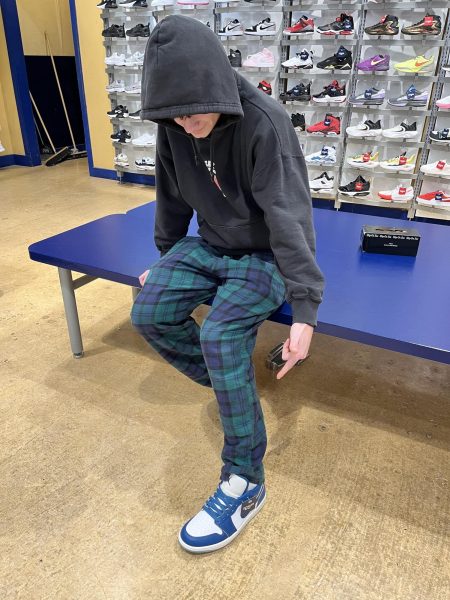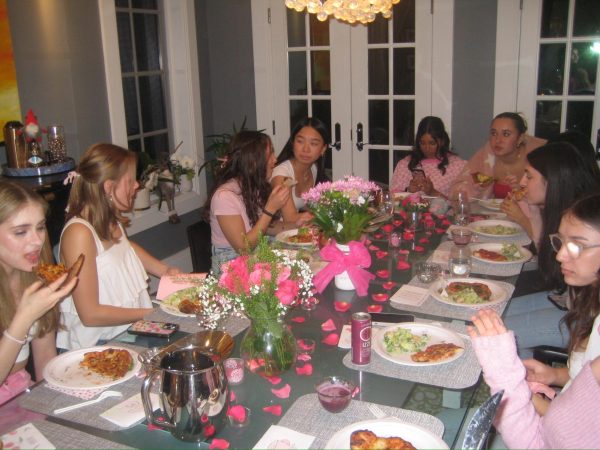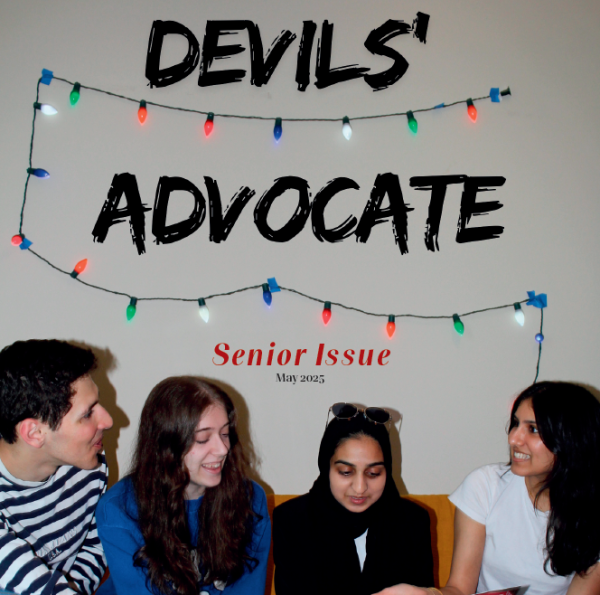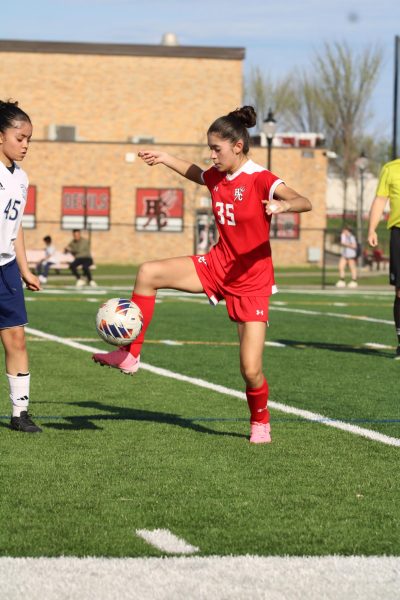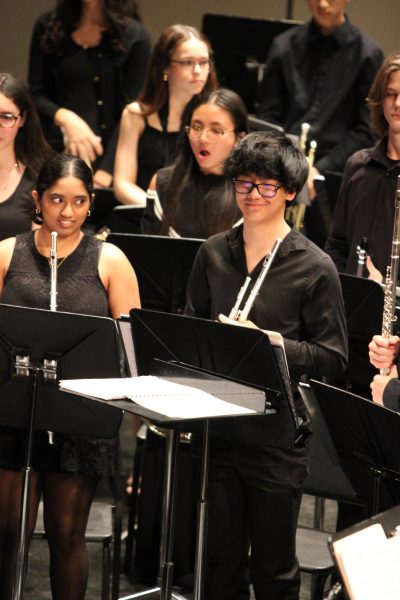Preschool Practicum: Childcare and Development invites toddlers into classroom
Ms. Lisa Sopiarz, Childcare and Development teacher, and her students prepare the classroom, replacing desks with tiny tables and chairs. They haul ABC rugs onto the blue carpets and decorate the room, just in time for Central’s youngest students who flood the classroom, moving their nametags with stuffed animals in hand.
Each year, after spring break, childcare and development classes host a “Preschool Practicum,” which invites preschoolers from all over to participate in a student-run, makeshift preschool.
The “preschool” runs from 9-10:30 a.m. every Monday, Wednesday, and Friday. The students rotate as “teachers,” creating lesson plans and activities for the preschoolers upon which they are graded. These are called “teaches.”
“Hopefully, by this point in time, I’ve taught them enough that they feel comfortable teaching the lessons themselves,” Sopiarz said. “I try to stay out of their teaches because that’s for them to learn and grow as teachers.”
When they are not teaching, students in the class have other jobs. Some are teacher’s aids. The aids help set everything up, clean everything up, and cater to the teacher’s needs. The rest of the class observes.
The observers can be found in the observation booth. This room is sectioned off from the rest of the classroom by a two-way wall. From the observers’ side, the far wall of the room is a window into the main classroom. From the preschoolers’ side, it is a mirror. This way, their natural behaviors are not swayed by their knowledge of being observed.
“[The observers] always find one [preschooler], so they can look at the growth or pattern between students from how they did on day one of the preschool to how they did on the final day of the preschool,” Sopiarz said.
Despite their increasing familiarity with their assigned preschoolers, the observers are required to keep their notes completely objective.
“The observers write down, for example: He is using a red marker. She is eating her apple,” said Annemarie Tracey, a junior in Childcare and Development. “It’s just exactly what they’re doing, so you’re not inferring anything.”
Although she must be objective in her graded observations, Tracey has enjoyed watching the children grow and interact, making some inferences of her own.
“One girl is just always happy,” Tracey said. “She has these cute little dimples, and she’s always smiling. And then there’s another one that’s a little mischievous. They were sitting in a circle talking about each other and (he) kept crawling around the circle. He just couldn’t sit still! They’re all so unique. It’s really cool.”
So far, Tracey has been an observer, but she looks forward to taking over the class as a teacher. The teachers must fulfill a required lesson plan (snack time, read aloud, etc.), as well as create extra activities to keep the preschoolers occupied and interested.
“The students in the childcare and development classes are so creative,” Sopiarz said. “The activities they’re coming up with for the preschoolers to do impress me. Year after year, they just get better and better.”
In addition to maintaining a certain level of creativity, their lesson plans must also adhere to a certain theme, which changes daily. Recently, they had “All About Me Day,” where the preschoolers answered questions about themselves and decorated outlines of themselves on large pieces of paper.
“Next week, when I’m teaching, it’s a camping theme,” Tracey said. “We’re going to set up a tent. We’re going to have them go on a scavenger hunt. It’s a different theme every single time.”
Occasionally, the students even receive outside help with their lesson plans. Last Friday, the Hinsdale Humane Society brought in a therapy dog for “Animal Day.” Sopiarz was pleased with its success.
“That was awesome!” Sopiarz said of the event. “It was an awesome activity that was planned and implemented well, and the preschoolers thought it was so cool.”
Tracey says the preschoolers’ takeaways for each day depend largely on the variety of themes and activities.
“Each day has a theme, and I feel like [the preschoolers] are getting something out of every single day,” Tracey said. “They’re learning something new.”
Sopiarz suspects some of the students’ creativity is inspired by social media, but this does not bother her.
“I feel like going on Pinterest and looking at some of the activities they do and ideas had a big role in [their creativity], but I also think there’s some genuine interest, and some of the students really want to be teachers.”
So far, Sopiarz and Tracey believe the unit is going well. The teacher and the student could only cite one incident involving a tantrum, but Tracey viewed it in a positive light.
“When that girl threw the temper tantrum, [Ms. Sopiarz] handled it perfectly, and I really learned something from how she handled it,” Tracey said. “I really think that helps me for the future, when I’m with my cousins or something, how I could handle a situation like that.”
Sopiarz says she enjoys getting “the best of both worlds” out of teaching high schoolers how to handle preschoolers. She too feels she can relate class to her everyday life.
“I’m a mom, so everything that I teach in childcare and development, I’ve got a story to go with it,” Sopiarz said. “It’s always relating to everyday life.”
While Sopiarz listed many positives from the experience, what pleases her the most is seeing the growth in her students: the high schoolers.
“[My favorite part is] just seeing the high schoolers, the students, grow as students throughout their first teach to their last teach, and just the enjoyment on their faces when it went well,” Sopiarz said.
For the high schoolers, the greatest pleasure is their preschool students.
“The kids are so adorable,” Tracey said. “They’re just always having fun. I think my favorite experience is just seeing how they have fun because it makes me feel good, seeing them have fun.”
The Preschool Practicum began last week and will last until mid May.




